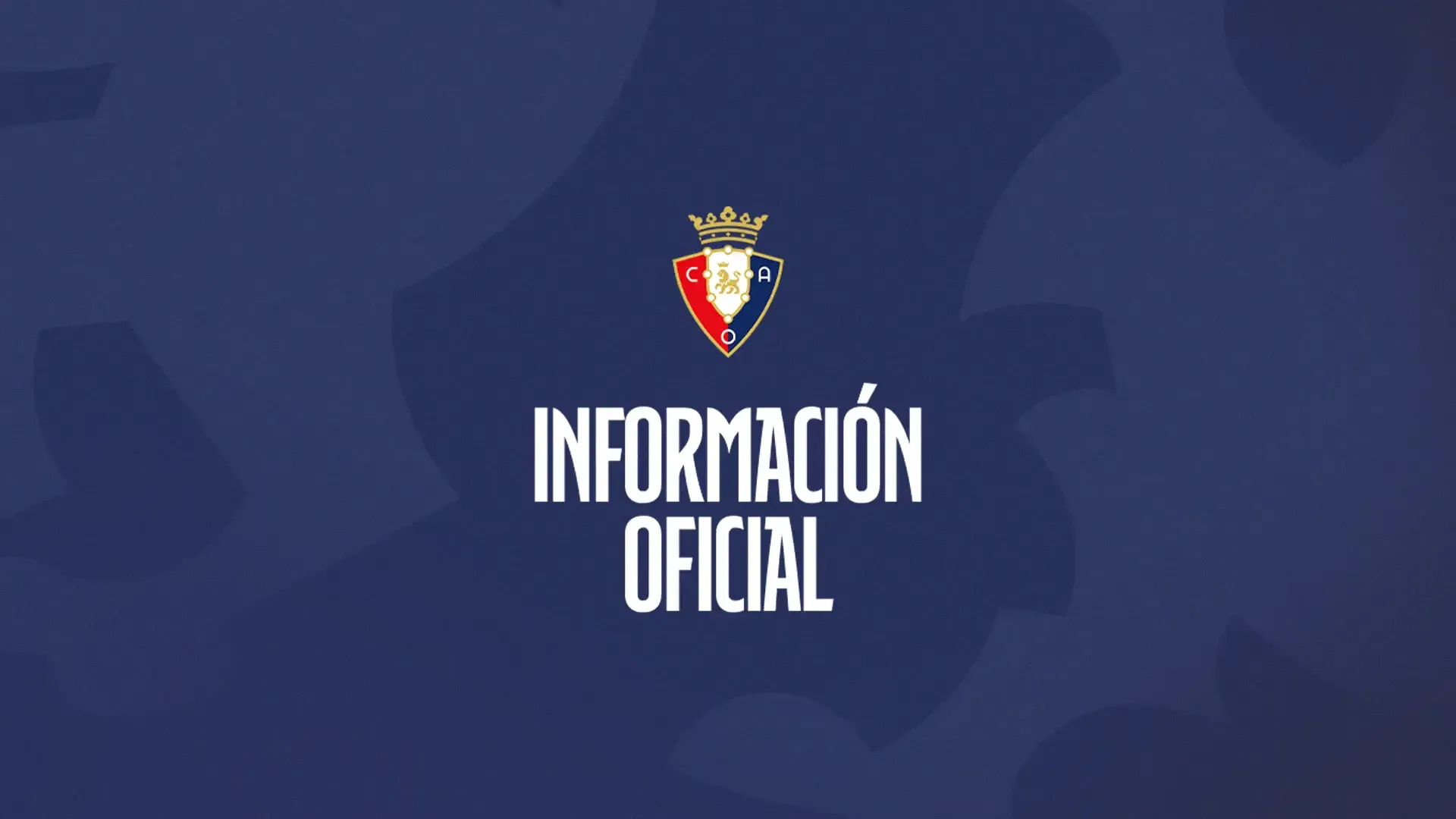Elections Called for Club Atlético Osasuna’s Electoral Board


Net debt drops to €60 million, down 11% since December 2024 and 3.3% since June 2024
Club Atlético Osasuna closed the 2024-25 season with a post-tax profit of €2,058,747, adding to the €2.8 million profit recorded the previous year. The budget approved by the Assembly last season, which had already included the sale of David García, had forecast a break-even result. However, revenues exceeded expectations.
Total income was higher than initially projected. Although TV revenues were slightly below budget due to the withdrawal of a Chinese LaLiga sponsor, the club offset this shortfall with a significant increase in commercial and advertising income, which reached about €10 million—almost 30% more than last season. Other operating income and player sales also performed better than expected, exceeding forecasts by €1 million. The accounts already included revenue from the transfer of David García and training compensation for Mikel Merino, but additional variables linked to Kike García, Nacho Vidal, and Iker Benito boosted revenue by over €1 million.
Expenses also exceeded the budget, mainly due to personnel costs related to contract improvements for key players, individual bonuses, and severance payments. The aforementioned player transfers allowed the club to raise its salary cap, which led to €3.3 million more in personnel expenses than initially planned. This, along with higher amortization (€0.4 million) and financial costs (€0.3 million), was partially offset by a €1.5 million reduction in operating expenses.
In any case, the final profit reached €2 million, up from €1.3 million in December 2024. The audit report notes that the result “stems from the profit generated by the sale of intangible assets (players), complemented by efficient cost management.”
Net Debt Falls to €60 Million
Osasuna’s net debt stood at €60,406,486 as of June 30, 2025, marking a €2 million (3.3%) reduction during the season. In December 2024, debt stood at €66.8 million, meaning it decreased by €6.4 million in the second half of the season, as anticipated. The improvement came despite taking on €4 million in new debt related to the purchase of additional property at the Tajonar training facilities from the Government of Navarre.
The club’s bank debt has dropped to €2.8 million, compared to €6.1 million the previous year. Most of Osasuna’s debt now stems from LaLiga’s “Boost LaLiga” (CVC) program. Only three loans from previous boards remain, totaling €2.7 million, along with €58,000 from a leasing agreement for El Sadar’s new video scoreboards and €90,000 from Rights & Media. The latter loan, originally €12 million to offset pandemic losses, was fully repaid in July after the audit.
According to the auditor, “By the end of the 2025-26 season, the only remaining bank debt will be the one contracted in 2003, which is being amortized at a rate of roughly €0.5 million per year until 2030. In summary, between the 2023-24 and 2024-25 seasons, the club reduced its outstanding financial debt by 54%.”
Regarding the funds received from LaLiga through the CVC plan, Osasuna had €6.5 million still available from the total €52 million allocated. Of that amount, €2 million was used in July to purchase additional land at Tajonar. The remaining €4.5 million will be applied to the expansion works of the training complex.
Debt Excluding the CVC Funds
Osasuna includes all funds from the CVC plan in its net debt reporting, as it has done for years. Therefore, the €60 million figure includes the CVC loan. However, since it is a participative loan, the auditor notes that this amount can also be considered part of the club’s equity and recommends presenting figures excluding CVC debt. In that case, Osasuna’s debt would stand at €16.4 million.
“If the debt related to the CVC agreement were excluded, the club would be capable of covering its total debt in approximately 1.5 years based on current results. Even including that debt, the estimated repayment period would extend to 5.8 years, which still reflects a stable financial situation,” the auditor reported.
As of June 30, 2025, the club’s debt with CVC was €44 million, while external debt excluding CVC stood at €16.4 million—together totaling €60.4 million in net debt.
The audit also highlights changes in the club’s assets over recent years. When Osasuna transferred all its assets to the Government of Navarre to settle its debts—retaining the rights to use El Sadar and Tajonar—the club recorded the value of those assets on its balance sheet, but with annual amortization that will reduce their book value to zero at the end of the agreement. Thanks to recent operations, Osasuna now owns €10.5 million in fully unencumbered assets, a figure that will increase with upcoming construction projects at the training complex.
Finally, the club’s equity has also improved, although it remains negative. From -€5.8 million, it improved to -€3.7 million, driven by this season’s €2 million profit. Cash reserves as of June 30, 2025, totaled €5.7 million.
Record Budget for 2025-26: €86.5 Million
Looking ahead, the club has projected record revenues of €86.5 million and expenses of €84.4 million for the 2025-26 season, resulting in a forecast pre-tax profit of €2.1 million. The accounts to be presented to the Assembly already include the €12 million transfer of Jesús Areso to Athletic Club last summer. The club’s operating income is expected to reach €71.1 million.
Expenses will remain similar to last season, with a slight increase in operating costs due to higher TV revenues, which entail greater contributions to the CSD, LaLiga, RFEF, and AFE.
Latest news See all
Sponsors